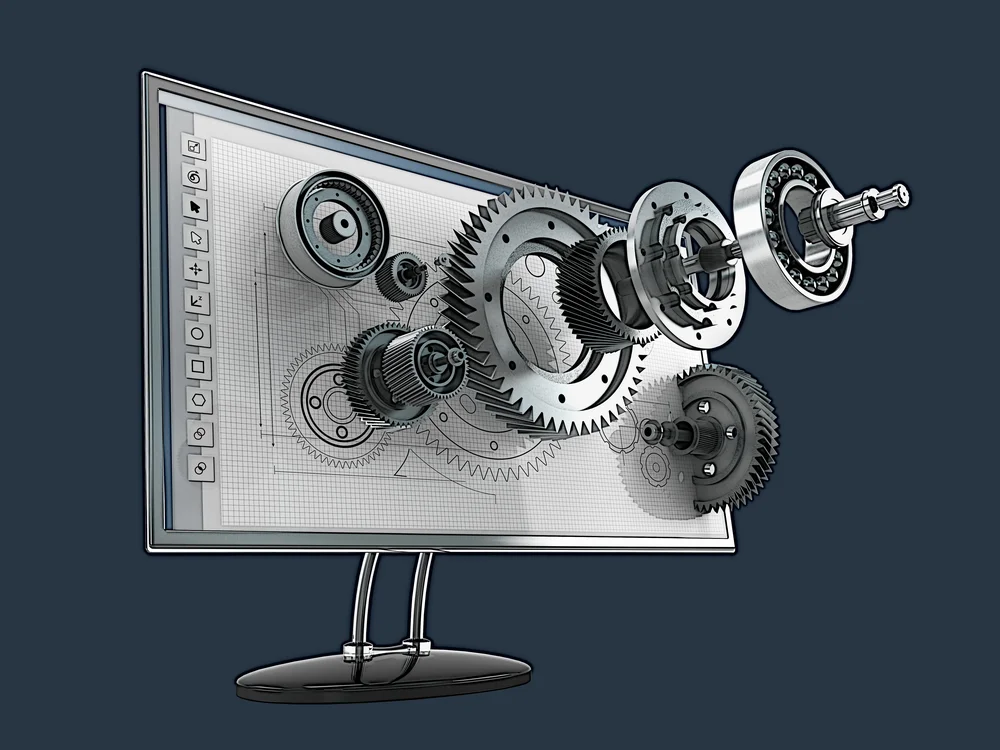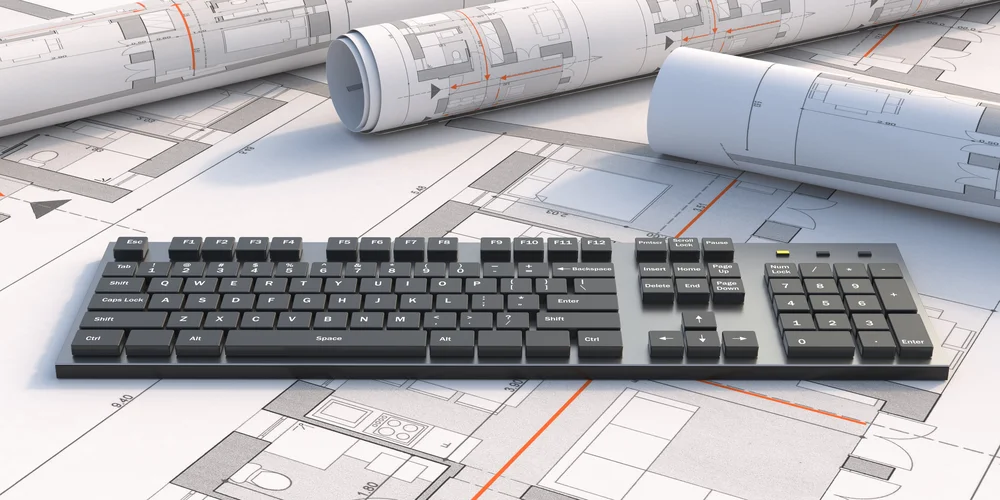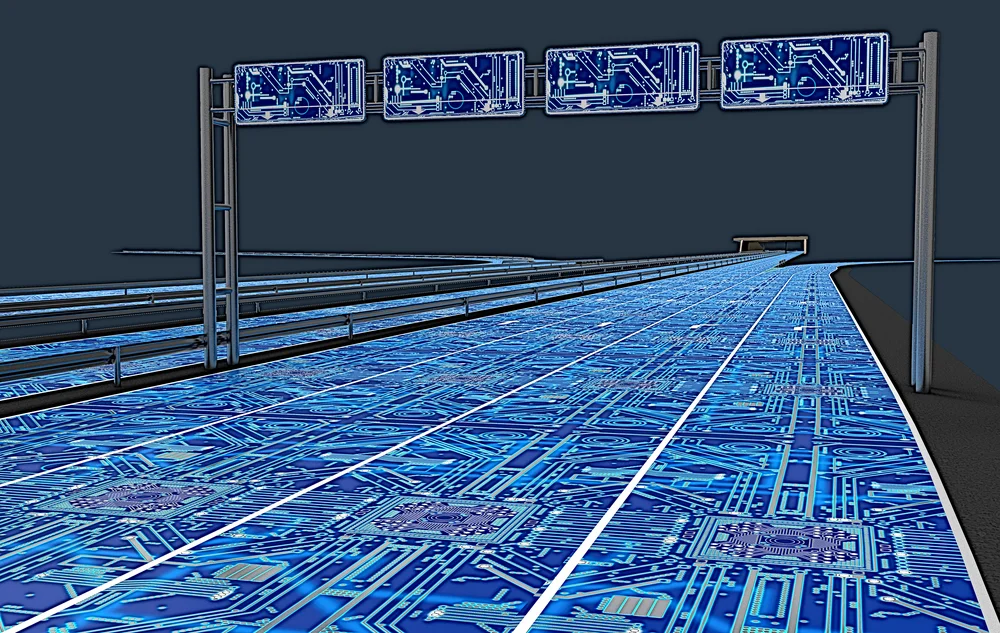Relevance of AI in computer-aided design




Artificial Intelligence is the science of making machines do things that would require intelligence if done by humans.
—Marvin Minsky, Pioneer of intelligence-based mechanical robotics and telepresence.
Computer-aided design, or CAD, has come a long way over the recent decades, streamlining and accelerating a wide array of repetitive and tedious steps associated with the planning, testing, and implementing of designs. CAD is an automated method of combining computer technology and specialized software. This symbiosis aims to create virtual models and drawings encompassing architectural, manufacturing, automotive, engineering, industrial, and artistic artifacts. A wide range of CAD software emerged over the last 25 years to be applied across a spectrum of applications and industries. A designer who chooses not to use CAD will not have the time to be highly creative, nor will numerous options be reviewed. CAD facilitates much easier and simpler designs to very complex challenges.

AI is often embedded within CAD for automated decision-making (ADM), a process where AI algorithms are applied to data collection, processing, modeling, and utilization in support of automated decisions. Eventually, feedback from the decisions is reviewed and evaluated in terms of improving the decision-making process.
An algorithm may be defined as a sequence of “encoded procedures for transforming input data into the desired output, based on specified calculations” (Gillespie, 2014, p. 167). Algorithm processing normally assumes no human intervention. Thus, ADM is used to identify this lack of human mediation in problem-solving and decision-making.
Today, computer-aided design is on the verge of another revolution, with the primary driver being artificial intelligence (AI) and machine learning (ML). Famously considered a “black-box” industry due to its technical complexity, artificial intelligence hasn’t been fully accepted or comprehended by the majority of the populace in most countries just yet. With that said, the apparent benefits of AI in a vast range of fields – including CAD – may turn the tables as more and more people start leveraging it in their day-to-day operations.
Many educated individuals perceive AI as more objective and rational than human cognition because of the inherent faith in a field like statistics, where computing power outperforms human thought processes in terms of speed and accuracy. Individuals with lesser insights into how computer programming works appear to rely less upon the validity of AI outcomes, specifically ADMs. This stance can be attributed to many movies and science fiction books that have emphasized the severity of mistakes and errors made by AI-based computing platforms. Thus, a lack of trust in results is a commonly held perception.
Before we work on artificial intelligence….why don’t we do something about Natural Stupidity.
—Steve Polyak, Computer Scientist

But how exactly can AI support computer-aided design?
This article will introduce the recent developments in CAD supported by AI and shed some light on AI’s improvements to the field. A later article will address the application of ML to CAD.
How can artificial intelligence enhance computer-aided design?
CAD has diminished the volume of manual actions required during design creation. This time savings has substantially accelerated the drafting process and allowed designers to reallocate their effort. The outcome is designers developing increasingly complex ideas. Even though the basics have been covered, many other bottlenecks remain that don’t reasonably permit designers, engineers, and architects to make further improvements to their workflows. Some significant bottlenecks include:
- Designers typically need to tune model parameters manually to develop the best design for a project’s requirements.
- Changing a single parameter can substantially impact the properties of a design, so validating designs after each change can extend the project by days or even weeks.
- Feedback loops can slow down the progress of a project since collecting information to determine what needs to be tweaked isn’t an instantaneous process.
One could argue that existing CAD tools perform computer-aided drafting rather than computer-aided design since they are essentially “glorified drawing boards.” The challenges and opportunities of CAD have so far been unexplored and unresolved because mainstream technology doesn’t provide designers with assistance beyond drafting. The next generation of applications aims to move CAD from being a tool to becoming a medium for complex design expressions.
As AI progresses and becomes more deeply embedded in CAD, AI can address these issues by:
- Speeding up drafting and selecting design options by generating suggestions based on certain parameters (such as weight, size, costs, or material).
- Automatically tweaking and adjusting designs in case they don’t meet performance or appearance criteria.
- Suggesting further details to add to the design based on prior actions taken by the user.
- Further improving existing designs based on customer feedback, changing technology, or new regulatory requirements.
In more advanced AI models that may appear in the future, these steps could be conjoined into one solution that would take care of the design process end-to-end. By doing the heavy lifting, AI may allow designers and engineers to focus on other, perhaps more important, issues, such as improving their creations’ quality, efficiency, and reliability.
Moreover, the design experience is often messy, ambiguous, and draws upon intuition and incomplete data. Sensemaking and meaning-making are often generated through the cognitive association and imagination of the designer. Currently, AI-based algorithms have not reached that level of sensemaking. Nonetheless, AI is making significant inroads into CAD, as well as the outcomes that are generated through design thinking.

How has AI been used in CAD so far?
AI has already made its way into computer-aided design in one form or another. As van Berkel (1999, p. 39) predicted at the turn of the millennia:
“The three most important architectural potentials of the new mediation techniques [machine metaphorisation] are the expansion of the spatial imagination, the radical break with a hierarchical design approach, and the introduction of different disciplines into the design process, relating the design immediately to its final execution.”
For example, several software vendors have integrated AI functionality in their architecture, construction, and engineering solutions…
Perhaps most prominently, Autodesk offers generative design tools to help users optimize their drafting pipelines. The company’s solution does this by quickly producing design suggestions based on many input parameters, such as cost, manufacturing methods, materials, or spatial requirements.
SolidWorks has developed an AI-powered tool called Design Assistant. This tool is intended to suggest or predict what changes should be made next to a design based on selections made earlier. When picking an object, the AI algorithm identifies and selects similar objects of an analogous size and predicts other objects the engineer may be interested in applying. If an object from the range of proposed objects is selected, then further predictions are proposed based upon the implicit feedback. The Design Assistant automatically chooses the suggested objects by employing geometry recognition, fast-tracking the design process.
Notably, AI in CAD isn’t restricted to the process of drafting and improving designs. In February 2019, Siemens introduced a new version of its NX CAD software with a user interface that dynamically changes based on the user and context. Far too often, a CAD tool offers too many commands to the draftsperson or engineer. Many folks suggest that 90% of activities in a CAD system only apply 10% or less of the available commands. A dynamic UI reveals additional commands when the AI algorithm interprets that the engineer might need them—commands that may be unknown or seldom used.
Immense efforts have been invested in creating CAD datasets for AI training, with SketchGraphs being a great example. Introduced in 2020 by Princeton University and Columbia University researchers, SketchGraphs contains 15 million parametric CAD sketches. The sketches are represented as a geometric constraint graph where edges indicate geometric relationships between primitives (nodes). Unlike other CAD datasets that focus on 3D shape modeling, SketchGraphs emphasizes the relational structure of its sketch samples.
More information about the dataset is available in its GitHub repository if you are interested.
Next steps
Artificial intelligence is still a novelty for computer-aided design. Much more needs to be done to uncover its full potential in the industry. However, the benefits that AI aims to bring to life seem quite promising even today.
Some useful free courses offered that can help create an introductory foundation are:
- CAD and Digital Manufacturing Specialization at Coursera by Autodesk.
- Simulation Analysis for Mechanical Engineers with Autodesk Fusion 360 at Coursera by Autodesk.
- Fundamentals of Artificial Intelligence at Udemy.
- Artificial Intelligence at Udemy.
- Generative Design for Industrial Applications at Coursera by Autodesk.
Needless to say, AI raises concerns related to employment. If artificial intelligence someday becomes able to perform actions currently carried out by human specialists, won’t it just push designers and engineers out of the field? Georgios Petropoulos presents some insightful insights in The Impact of Artificial Intelligence on Employment (p. 119). It’s difficult to predict how AI will affect the job market. Still, one thing is certain – it will permit professionals to push the boundaries of architecture and engineering beyond the horizons explored so far.
References:
Gillespie, T. (2014). The relevance of algorithms. In T. Gillespie, P.J. Boczkowski, & K. A. Foot (Eds.). Media Technologies: Essays on Communication, Materiality, and Society. Boston: MIT Press. pp. 167-197.
Petropoulos, G. (2018). The impact of artificial intelligence on employment. In M Neufeind, J. O’Reilly, and F. Ranft, Praise for Work in the Digital Age: Challenges of the Fourth Industrial Revolution, London: Rowan & Littlefield, pp. 119-132.
Van Berkel, B. (1999). Mediation. In J. Verbeke, T. Provoost, J. Verleye, and K. Nys., AVOCAAD [Added Value of Computer Aided Architectural Design] Second International Conference. Brussels. pp. 41-46.


